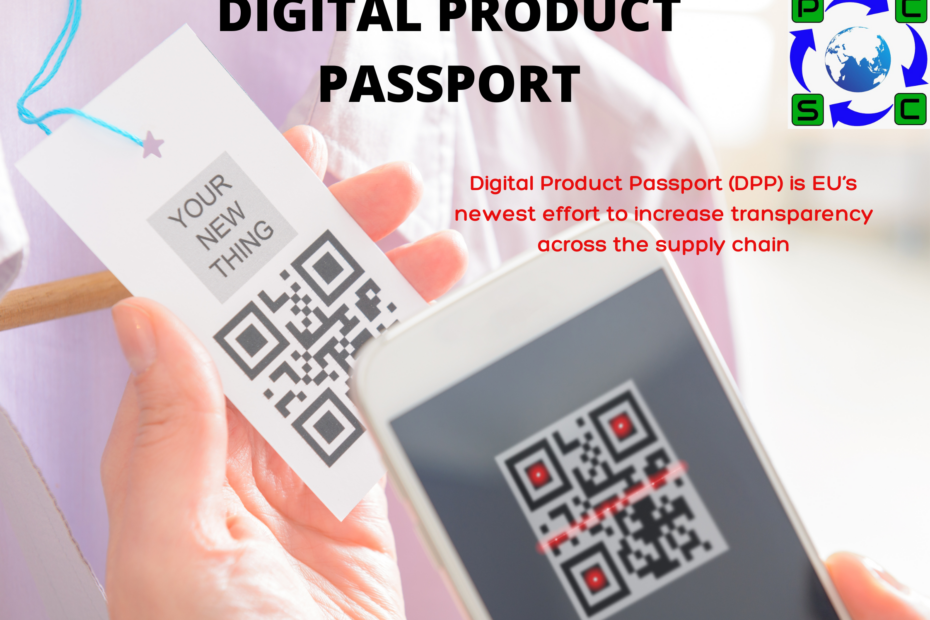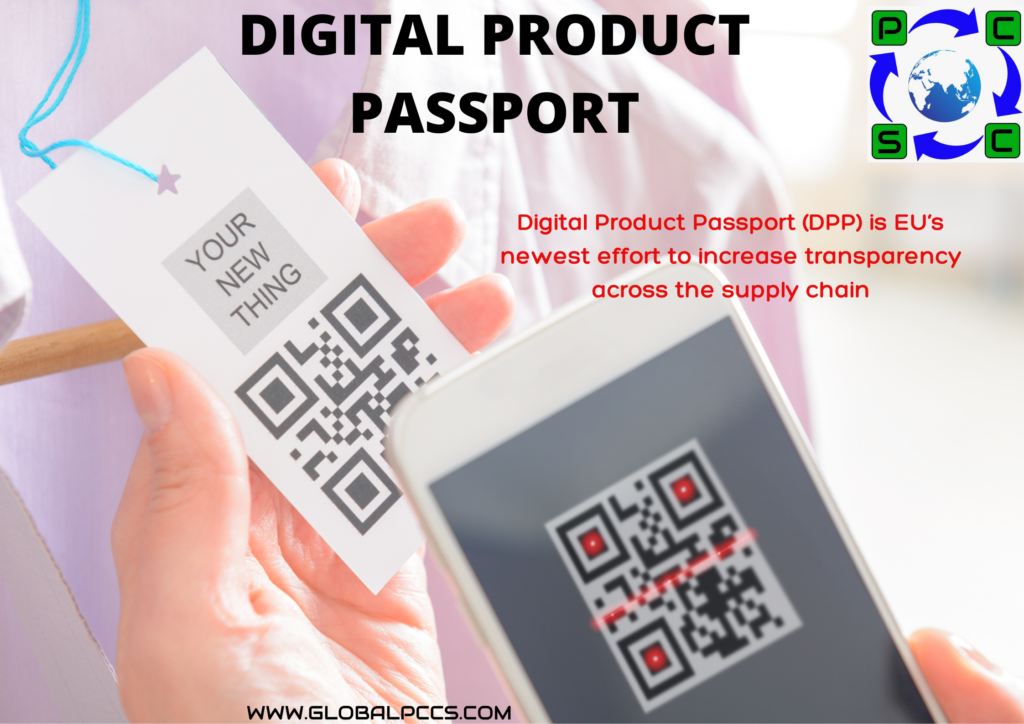What is Digital Product Passport (DPP)?
Digital Product Passports (DPP) are a way of gathering and sharing information on a product over the course of its full existence. They are used to show a product’s environmental, recyclability, and sustainability features.
In order to unlock benefits, use-cases, and value across entire ecosystems, recorded product data from across the supply chain, including raw material sourcing and manufacturing process, is shared among a number of stakeholders and participants in the DPP.
Circular Economy & Eco-design sustainable Products Regulation
The new circular economy action plan (CEAP) was approved by the European Commission in March 2020. It is one of the fundamental building pieces of the European Green Deal, Europe’s new strategy for sustainable growth. The EU’s transition to a circular economy will reduce pressure on natural resources and will create sustainable growth and jobs.
The proposal for a new Eco-design for Sustainable Products Regulation, published on 30 March 2022, is the cornerstone of the Commission’s approach to more environmentally sustainable and circular products. The proposal adds on the existing Eco-design Directive, which presently exclusively covers energy-related items.
The digital product passports initiative is part of the proposed Eco-design for Sustainable Products Regulation and one of the key actions under the Circular Economy Action Plan (CEAP).
Who will need to implement digital product passports?
Battery passports have set precedent for digital product passports.
Textiles, construction, electronic waste, plastics, chemicals, and automotive sectors are all seeing pressures and initiatives to move to more sustainable business practices.
Some of the relevant regulations include:
- Eco-design for Sustainable Products Regulation: This is currently in the proposal stage that was published in March 2022 and is a key area of the CEAP. The goal of this regulation is to increase the overall circularity of products and their performance in terms of energy and environmental sustainability.
- EU Strategy for Sustainable and Circular Textiles: This is in the implementation stage as of March 2022 and is another key area of the CEAP. This rule aims to increase the total circularity of textiles used in, among other things, clothes, structures, and automobiles. The key goal is to essentially improve the longevity and durability of textiles and to increase the ease of repair and recycling.
- Construction Products Regulation (CPR): This is in the implementation stage as of March 2022 and is another key area of the CEAP. This regulation is focused on ensuring that construction products across Europe abide by safety and environmental criteria.
- (New) EU Battery Regulation: This is at the implementation stage as of March 2022 and is another significant aspect of the CEAP. This regulation is focused on ensuring that batteries within the EU area are sustainable and safe that carry high levels of recyclability.
As per the CEAP’s guidelines, the three sectors of textiles, batteries and construction will be the first to utilize Digital Product Passports due to their high circularity potential and recyclability factor along with their current climate impact.
A Digital Product Passport Solution
- Traceability software can be used to standardize data sets coming from existing ERP systems after a foundation for the data to be included in digital product passports is established.
- For the submission of digital product passport data, the necessary unique product identifiers may be implemented using already-existing technologies like barcodes, QR codes, RFID tags, or something similar. In the end, this procedure is largely automated.
For Example: – Consumers may scan a QR code on a clothing item’s label to be taken to the corresponding Digital Product Passport where they could examine information on the product’s sustainability credentials, ownership history, and even instructions for recycling.
Together with material flow, information is transferred along the supply chain
Here is how the information has been shared across value chain: –
Challenges to introduce DPP
- Finding a balance between information-sharing and protecting personal and corporate data is not easy.
- If convincing and applicable business cases for information transfer are lacking, corporate interest in DPPs is hampered.
- A lack of funds or skills may prevent small and medium-sized enterprises (SMEs), start-ups, waste operators and consumers from using DPPs.
Here’s how business & brands can get the most out of a digital product passport system
Get a competitive edge in the market: –
- Products can then be marketed with trustworthy and quantifiable sustainability claims.
Describe circular business models: –
- Opportunity to explore new business models
- Designing waste out – new revenue streams
- EOL process – value currently lost in EOL material & waste steams
- Strengthen supply chain security within businesses
Become a leader in sustainability: –
- Manufacturers to better understand their material flows and process efficiencies.
- Encourage simpler material reuse cases when possible.
Use legislation compliance to your advantage: –
- Adopting voluntary certification will also allow companies to capture a greater market share.
- Traceability information becomes a basic requirement for material procurement.
How Global PCCS can support on DPP: –
Source: –
https://www.circularise.com/blogs/digital-product-passports-dpp-what-how-and-why
Digital Product Passport (DPP): A Complete Guide








 Authorised IMDS & CDX Training & Consulting partner for
Authorised IMDS & CDX Training & Consulting partner for







